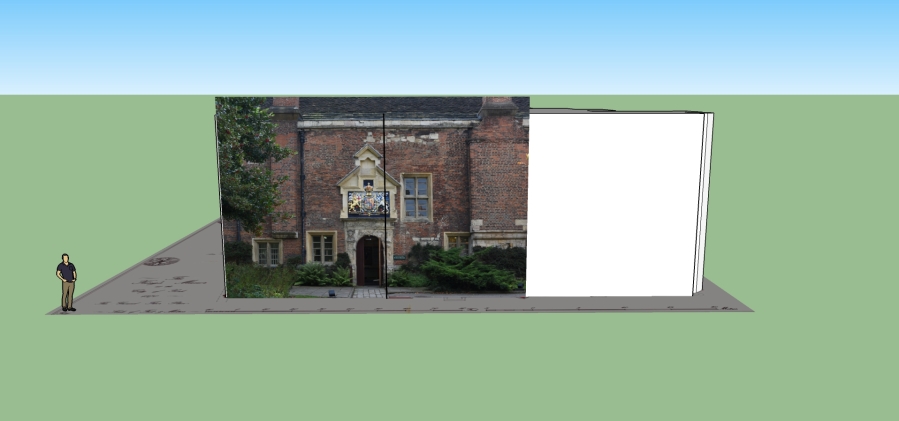
Intro
In the seminar today we learnt about the use of 3D models in Archaeology. With the key focus being on recreating kings manor in google sketch up from a floor plan and a picture of the face of the building. As the aim was to see how far we could get in 15 minutes with the recreation of the building. Further, we looked at the use of digitally recreating sites and ‘In the case of virtual reconstructions, we should be not only interested in the end product, but in the process that leads to that product,’ (Morgan, C. 2009) which is evident with the low accuracy of the models that we have produced.
Making a 3D Model
We used Google Sketch Up to recreate the model, with the aid of a floor plan and a photograph of Kings Manor. We first imported the image of the floor plan into Sketch Up then we placed it on the horizontal plane. Next, we used the tracing tool to draw around the outline of kings manor that would be used as the depth tool to convert the 2D map into a 3D building. Once the basic 3D model of the building was created we had to import the image of the front of the king’s manor. This was to be placed on the front of the 3D model to give a sense of scale relative to the person as seen above.
Key Concepts
The key ideas we learnt about this week was the use of 3D reconstructions to give an alternative view through the eyes of the creator on the site. As the use of VR and 3D modelling is becoming more widespread, the uptake in archaeological applications is relatively high. As it allows for a new method of documentation of a site in question. However, the use of 3D modelling, VR and similar technologies has a large number of drawbacks. As what would have been a state of the art model from the early 2000s would be vastly outdated when compared to a model from today. Bringing up the topic of digital decay that is becoming more of an issue. As the use of digital technology now will be outdated within a matter of years due to the rapid advancement in technology. Finally, the funding and the software itself to maintain a 3D model will not last forever as technology does become out of date extremely quickly.
Conclusions
Overall, 3D modelling in archaeology is a relatively new concept even though it has been around for a long time relative to digital technology. It allows for us to get a different perspective on a site by recreating what a site would have once been based on the evidence discovered on the site. 3D modelling technology is widely available enabling anyone to create a 3D reconstruction that can be used to convey a site in a new light. However, even though the technology has its positives it has a large number of drawbacks which have substantially limited its use.
Bibliography
Google Sketch-up: https://www.sketchup.com/
Morgan, C.L., 2009. (Re)Building Çatalhöyük: Changing Virtual Reality in Archaeology. Archaeologies, 5(3), pp.468–487.